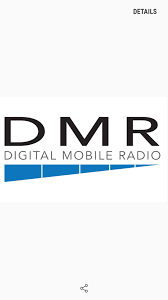I have a Pi-Star and a BTECH DMR 6x2 radio, mostly use it with a few talk groups and the quadnet array (XLX307). I would like to use it as a gateway/auxiliary station to allow me to control and do a sort of cross band repeater using an old radio shack 2m radio I have. My shack is in the Garage and I would love to talk on the analog repeater from the house but the HTs I have are just not enough power.


I don’t think so. You probably want something like AllStarLink instead.
Thanks Jason, I will check it out
I’m not sure if AllStarLink or EchoLink will work for what I need or not. I can’t seem to find much on my desired use. The repeaters I want to use in my area are Analog only and don’t AllStarLink or EchoLink nodes. I’m attaching a diagram of what I’m trying do.
Oh, I see. This is kind of what people often do with “Cross-band” repeat modes on some mobile radios -but in your case, mixing DMR and analogue. You need to be cross-band unless you have all the filtering that is in place with an actual repeater. That MMDVM board will be overloaded unless the analogue radio is on a different band.
Yes, Allstar can absolutely be used as a repeater controller like this, but your specific plan might be easier to develop yourself from scratch, idk. Pi-star supports that MMDVM modem out of the box, but it doesn’t provide a way to interface audio, and it isn’t set up to do any repeater controller work. It doesn’t even decode/encode audio at all, it just passes the codec data as-is.
If I was doing this, I might actually use 2 rpis -one just as a typical MMDVM/Pi-star hotspot, and another as an Allstar node connected to that analogue radio. The latter can be set up to bridge to DMR, and thus allowing your MMDVM hotspot to link in. It will need hardware or software codecs though. You might not want 2 pi settups, but that might be handy as your dmr hot spot can move around with your HT.
Again, Thanks I’m going to start digging into AllStar, I’ve played with EchoLink but not AllStar so I guess I will start at the “Beginners Guide” in the forum. Let me know if you have any tips. Also, I’m a General but it’s been many years since I got my Gen. and so, so many since I had my Novice (when they even had the novice class, I still have code test cert) Oh crap, I’m old and and outdated :( Any way what would the FCC part 97 regs say with what i’m trying to do?
Under Part 97 this would qualify as a repeater.
MMDVM doesn’t convert from DMR to analog. You would need more software bits to do this. It’s definitely possible using DVSwitch.
You would need separate interfaces for DMR and analog though, a CM108 interface (repeater builder USB Rim Lite, RA or DRA would work) AND a MMDVM Hotspot. You might not want to run these all on a Pi. My bridge runs on a Vultr virtual machine though I’m planning to move it to a Dell Micro desktop to save the $5 a month.
Using DVSwitch you would be using Allstarlink to interface to the analog side as a half duplex node, then using Analog Gateway to interface with all-star using chan_usrp, then transcode to/from DMR (you can use the md380 emulator or buy a AMBE hardware device), and then you’d have to interface that back to your pistar MMDVM Host using a brandmeister TG (you can use your DMR ID as a talk group). You could also run your own HBLink locally, but that gets a bit more complicated.
It’s a fun way to learn a lot about how Allstarlink and DMR networks actually work.
We’re currently using DVSwitch to link the NB1RI network to Brandmeister TG 3105992 which lets me use the K1EWG repeater in my garage to monitor the network. I did this before I added a 220 repeater in my garage that’s linked, but now I can monitor it both ways. Oh, and I also linked an IP phone in my living room to the 220 machine running Allstarlink, so plenty of options.